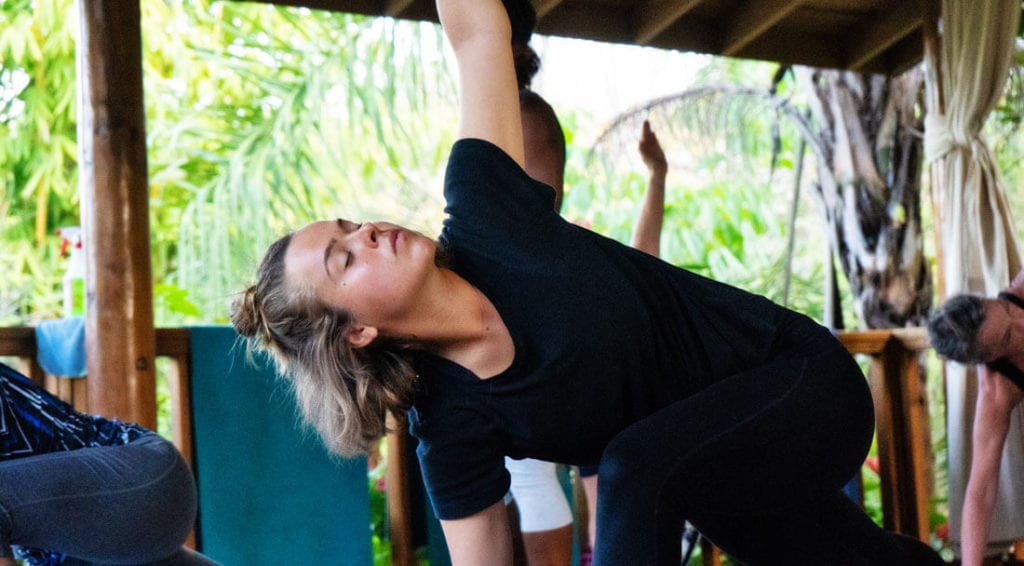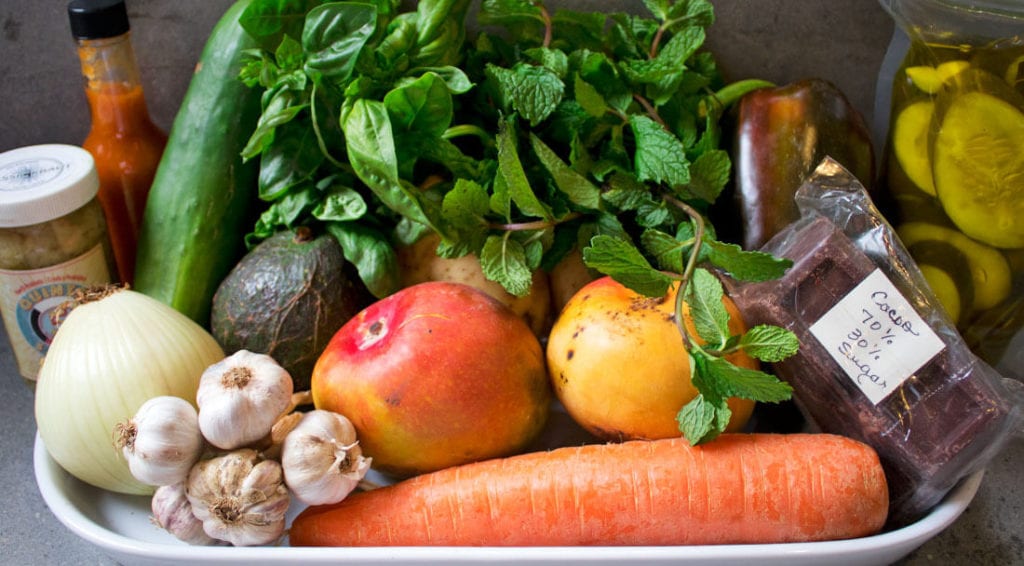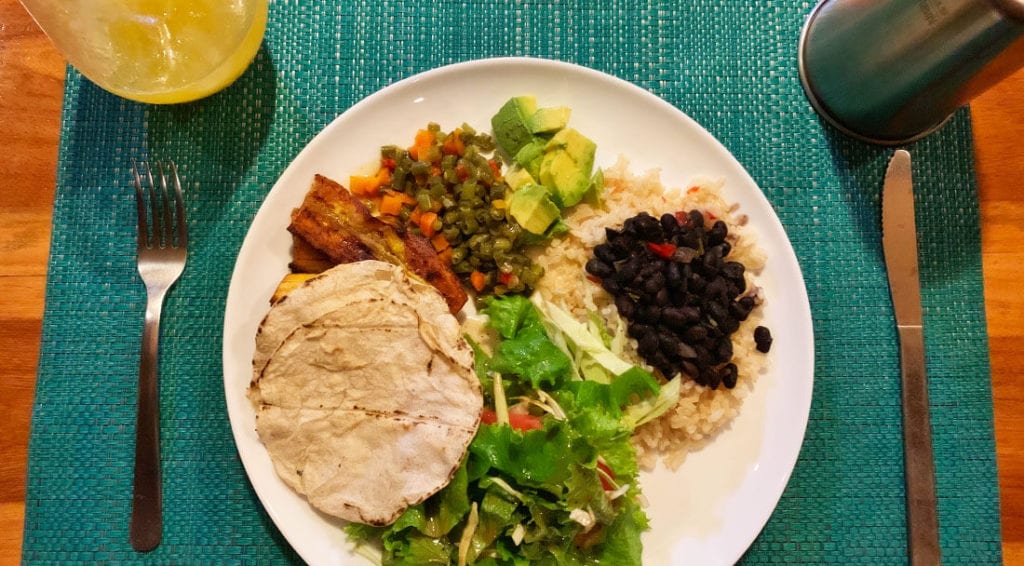Yoga is for everyone. Yoga is for people who are vegan, gluten-free, paleo dieters, sugar addicts, omnivores, and any other diet you can think of. Yet if this is the case, why is there all this buzz around abstaining from certain types of food as a yoga practitioner? This blog will give you more information about how yoga and food intersect, and what that means for you as a new or experienced yogi. If you are actually doing yoga, you will start to notice your body more. This simple act of noticing might lead to some changes that we will discuss. The short answer is that you don’t need to change your diet in order to do yoga. What you may realize is that you actually want to change your diet when you start doing yoga. Keep reading to find out why.

Eat what serves you
When I first started to get into yoga I was going to Bikram classes 3-4 times a week. Bikram is taught for 90 minutes in a heated room. The online pre-class instructions encourages students to avoid eating three hours before class. All the twisting, bending, and sweating doesn’t pair well with a full stomach. In fact, it can be downright uncomfortable to do yoga after eating. I share this because it’s an extreme example of eating (or not eating) to serve a higher purpose.
At Bodhi, we also aim to eat light or nothing at all for a few hours before yoga class begins. This allows our students to do some of the more intense postures that involve strength, twisting, and even inversions. It also allows for a more comfortable practice in the hot temperatures that guests are often not used to.

Food is fuel
What we eat can create comfort or discomfort in the body, regardless of what we plan to do afterwards. For example, a big Thanksgiving dinner often leaves us feeling full and tired, which is a great excuse to plop on the couch and watch football for the remainder of the day. But if you’re trying to live an active lifestyle, be productive throughout your day, or enjoy extra-curricular activities, you may want to fuel yourself with more vegetables, ancient grains, plant-based proteins, and healthy fats.
In this way, you’re not consuming food because you’re bored, sad, happy, amongst friends, on vacation, or for a celebration. You’re eating food for the following reasons:
- To fuel yourself
- To feel awake and alert
- To provide your body with the nutrients and energy it needs to accomplish your tasks and goals.
When your goals are aligned with a yoga practice, you begin to understand your body more. You understand what it needs and when it isn’t efficiently fueled. It’s for this reason that many yogis eat healthy diets that often largely plant-based. Plants are packed with the nutrients and vitamins your body needs to grow strong and age gracefully.

Social vs. nutritional
As the granddaughter of a cattle rancher, it serves me to occasionally eat meat. I can enjoy some good BBQ every now and then, but too much meat leaves me feeling lethargic, with irregular bowel movements, and bloated. That’s my body’s way of saying, “this doesn’t serve you”. It serves me from a social standpoint, but for me, is important that it be regulated so that I can practice yoga every day in comfort.
The lead yoga instructor and co-owner of Bodhi Surf + Yoga, Pilar, is a vegan. She was a vegetarian for almost her whole life and became vegan several years ago. Her main reason for “going vegan” was that she felt very sensitive when she found how meat and dairy products got to her table, and all the unnecessary suffering the animals go through. Following the yoga principle of Ahimsa (non-violence), she made her decision.
Later on, she realized that not only it is one of the best changes that a person can do for the welfare of animals and to care for the environment, but also, she noticed that it does wonders for your health, and opens up a full new spectrum of interesting recipes. Although she has faced some challenges (especially when she travels), it is the best time to be vegan, as there’s plenty of options as well as people who are more open to accommodate.

What serves you?
Are there parts of your diet that no longer serve you? I’ve stopped eating candy because it was giving me cavities and the waste created a lot of single use plastic garbage. Besides the instant gratification of artificial sugar, I was not served by my consumption of candy. In fact, all of the other implications of my sugar addiction were negative. I’ve made the personal decision to practice delayed gratification and enjoy the occasional locally sourced chocolate bar instead.
You don’t need to change your diet to be a yogi. But being a yogi might cause you to change your diet. Yoga is so much more than a physical practice on your mat. It helps connect your body, mind, and spirit, aligning your physical self with a higher purpose. You’ll start to really evaluate how you’re fueling your body, where your food is sourced, and how it’s impacting the world around you. What can you add to your diet to make your body stronger and the world a better place?
Written by Katie Jones
Get a Toolkit to Create Calm in Your Inbox
Watch the first lesson from our full immersive course: 8 Limbs of Ashtanga Yoga, FREE!
Change the heading on the Separator tab ->
Search
Get a Toolkit to Create Calm in Your Inbox
Watch the first lesson from our full immersive course: 8 Limbs of Ashtanga Yoga, FREE!
Change the heading on the Separator tab ->
Most Read Blogs
What is the Meaning of Anjali Mudra?
May 27, 2020
Fitness for Surfers: Workouts, Exercises & Training
February 10, 2022
The Best Places to Eat in Uvita, Costa Rica
May 19, 2022
How to Get From SJO to Costa Ballena, Costa Rica
May 31, 2018
Change the heading on the Separator tab ->
Categories
Categories
- Bodysurfing (5)
- Food (6)
- Responsible Business (6)
- Surfing (59)
- Travel (62)
- Yoga (38)
Change the heading on the Separator tab ->
Newsletter
Thanks for subscribing! Please check your email for further instructions.
Change the heading on the Separator tab ->
Follow Us
Bodhi Surf + Yoga
Change the heading on the Separator tab ->
Read more
Yin Yang Yoga
Words by Carly Stoenner
Yin-Yang yoga is a harmonious blend of two distinct yoga styles: the slow, meditative Yin practice and the more energetic, dynamic Yang sequences. This unique fusion mixes the best of both worlds,…
Yoga for Core Strength
Words by Carly Stoenner
A strong core is more than just a physical achievement; it’s a foundation for easier movement, improved posture, and even heightened confidence. Your core is a network of muscles that stabilizes and…
Beginner Yoga Arm Balances
Words by Carly Stoenner
Yoga arm balances require strength, balance, and mental focus. The foundation for these poses is developed throughout your entire yoga practice, with strength and stamina gradually built upon over time to achieve…



